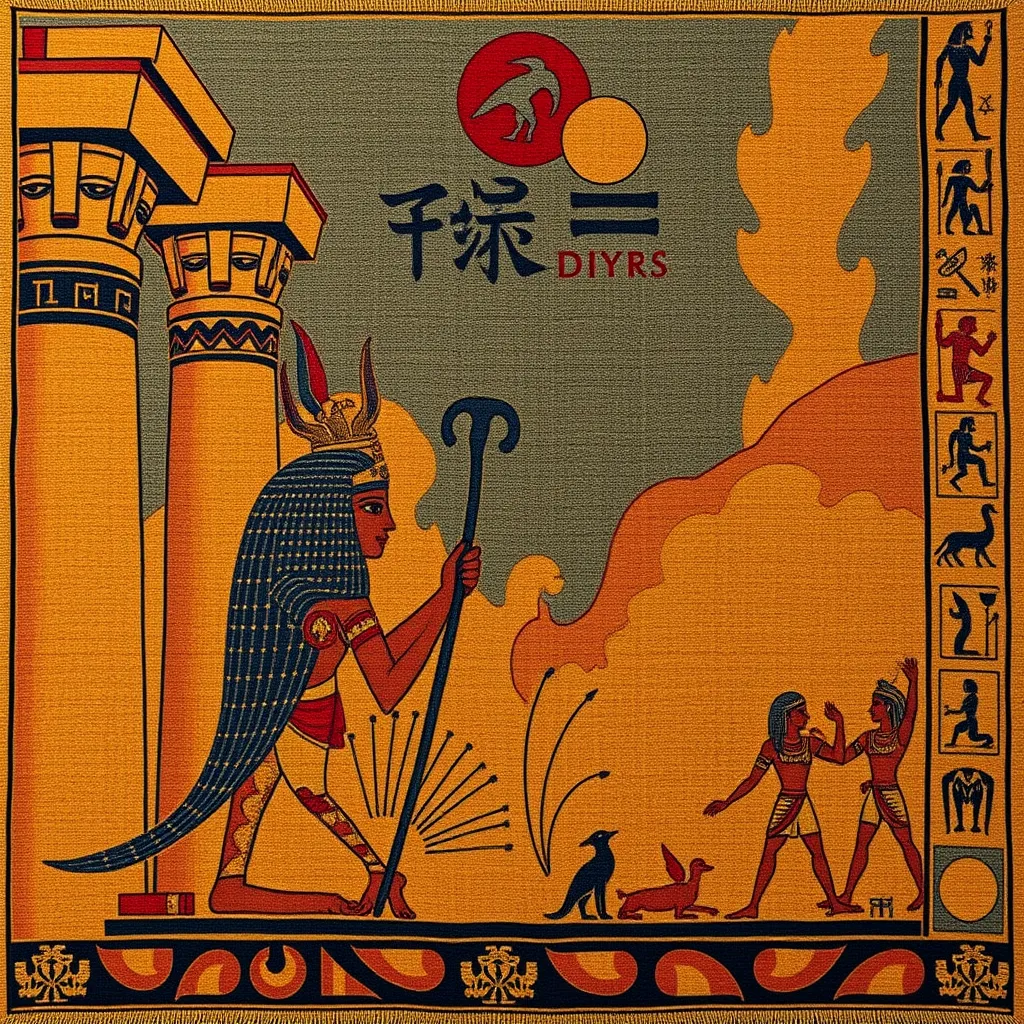The Duat: A Tapestry of Myths and Legends
I. Introduction to the Duat
The Duat is a pivotal concept in ancient Egyptian mythology, embodying the rich tapestry of beliefs surrounding the afterlife. Defined as the realm of the dead, the Duat is not merely a place but a complex landscape filled with challenges, deities, and the essence of the soul’s journey post-mortem. In ancient Egyptian thought, the Duat was significant, representing both the fears and hopes of the living regarding death and what lies beyond.
In the afterlife, the Duat served as the transitional space where souls would undergo judgment and transformation before reaching their final destination, whether that be eternal peace in the Field of Reeds or a darker fate.
II. The Geography of the Duat
The Duat is often depicted as a vast and intricate realm, filled with various landscapes and realms that reflect the journey of the deceased. It is characterized by:
- Deserts of fire and shadow
- Rivers, including the significant Nile-like river that flows through the Duat
- Fields of reeds, representing paradise for the righteous
Key locations within the Duat include:
- Duamutef: The guardian of the canopic jars, protecting the deceased’s organs.
- Ma’at: The embodiment of truth and justice, where the heart of the deceased is weighed against a feather.
- The Lake of Fire: A place of punishment for the wicked, symbolizing the consequences of one’s earthly deeds.
Each of these locations holds deep symbolic meanings, reflecting the values and beliefs of ancient Egyptians regarding morality, justice, and the afterlife.
III. Deities of the Duat
The Duat is populated by a pantheon of gods and goddesses who play essential roles in the afterlife journey. Major deities include:
- Osiris: The god of the afterlife, resurrection, and fertility, Osiris presides over the judgment of souls.
- Anubis: The jackal-headed god who oversees the embalming process and guides souls through the Duat.
- Hathor: The goddess of love, beauty, and motherhood, who offers comfort to the deceased.
These deities serve as both guides and judges, assisting souls in navigating the challenges they face and ensuring that they adhere to the principles of Ma’at during their journey.
IV. The Journey Through the Duat
The journey through the Duat is fraught with trials and tribulations that the deceased must overcome to achieve eternal life. Upon death, the soul embarks on a journey that includes:
- Crossing the threshold into the Duat, often depicted as a dark and foreboding space.
- Facing various challenges, such as monstrous guardians and treacherous landscapes.
- Undergoing the Weighing of the Heart ceremony, where the heart of the deceased is weighed against the feather of Ma’at.
Should the heart be found lighter than the feather, the soul is granted passage to the Field of Reeds; if it is heavier, the soul faces annihilation at the jaws of Ammit, the devourer.
V. The Book of the Dead and its Influence
The Book of the Dead, a collection of spells and illustrations, serves as a crucial guide for the deceased navigating the Duat. This ancient text was composed of:
- Spells that provided protection and assistance in the afterlife.
- Instructions for rituals and prayers to invoke the favor of the gods.
- Illustrations depicting the journey through the Duat and the challenges faced.
Each spell was tailored to help the deceased overcome specific obstacles, ensuring a smoother transition into the afterlife.
VI. The Symbolism of the Duat in Egyptian Culture
The Duat embodies profound symbolism in Egyptian culture, representing not only death but also rebirth and transformation. Its significance can be observed in various aspects of life:
- Art: The Duat is frequently depicted in tomb paintings, illustrating the journey of the deceased and the deities of the afterlife.
- Literature: Myths and stories surrounding the Duat proliferated, influencing Egyptian narratives surrounding life, death, and morality.
- Religious Practices: Rituals and prayers were established to honor the deceased and seek favor from the gods associated with the Duat.
VII. Comparative Analysis of the Duat with Other Mythological Realms
When comparing the Duat with other cultures’ underworlds, several similarities and differences emerge:
- Similarities: Like the Greek Hades and the Norse Hel, the Duat serves as a realm for the dead, where souls must navigate challenges.
- Differences: The Duat is uniquely characterized by its emphasis on the judgment process and the concept of Ma’at, highlighting a moral dimension not as prevalent in many other cultures’ beliefs.
VIII. The Legacy of the Duat in Modern Culture
The Duat continues to influence contemporary literature, film, and art, reflecting the enduring fascination with ancient Egyptian mythology. Its themes of death, judgment, and the afterlife resonate in:
- Fictional works that explore the concept of life after death, often drawing on Egyptian symbolism.
- Films and television series that depict the journey of the soul, using the Duat as a narrative device.
- Artistic representations that evoke the mystery and allure of ancient Egyptian beliefs.
IX. Conclusion
The Duat is a fundamental aspect of ancient Egyptian beliefs, offering insights into their views on death, the afterlife, and the moral implications of one’s actions. Its rich tapestry of myths and legends continues to captivate the imagination of people today, reflecting a timeless curiosity about what lies beyond the veil of mortality. The enduring appeal of the Duat illustrates not only the complexity of ancient Egyptian culture but also the universal human quest for understanding the mysteries of life and death.





